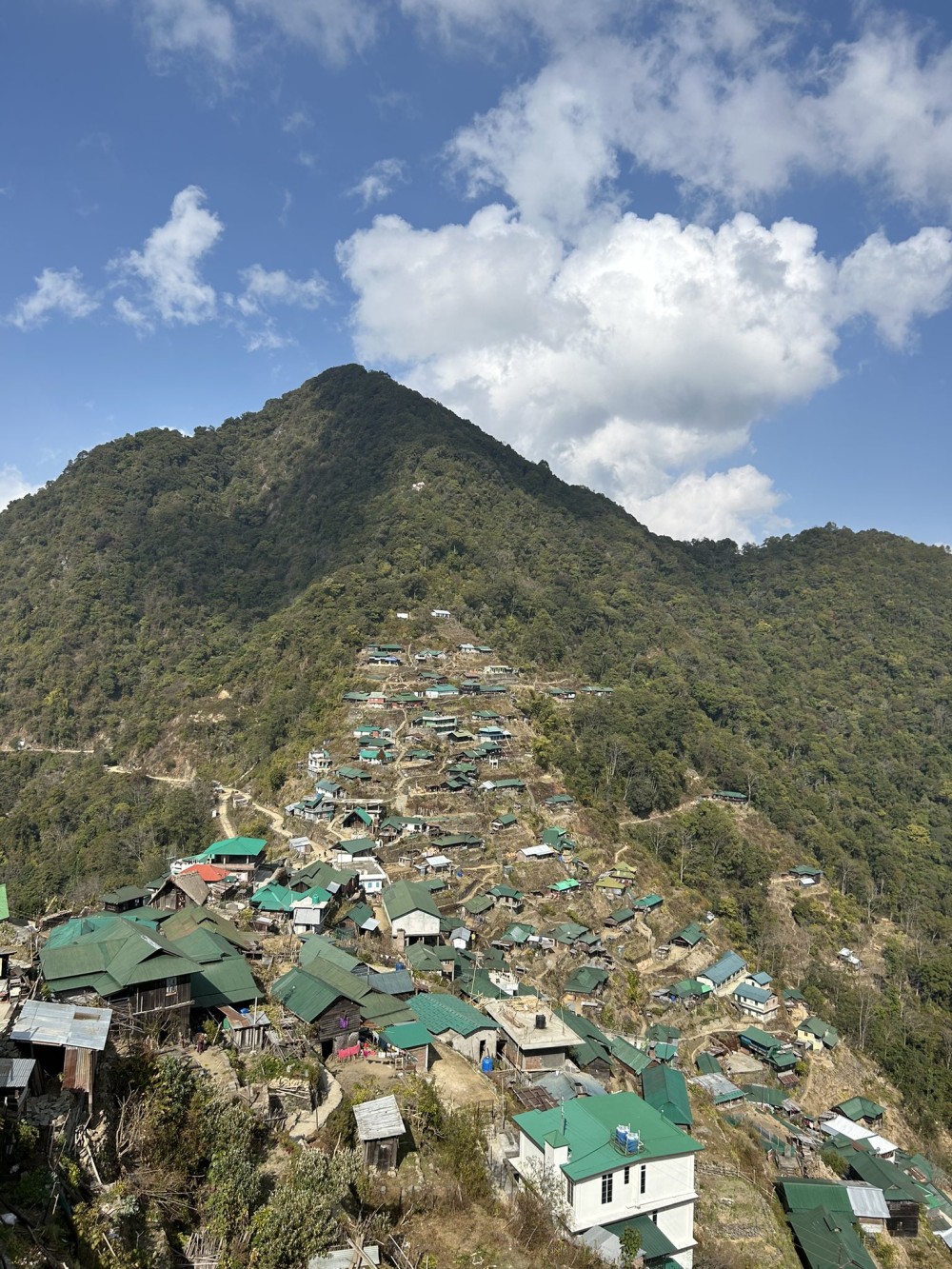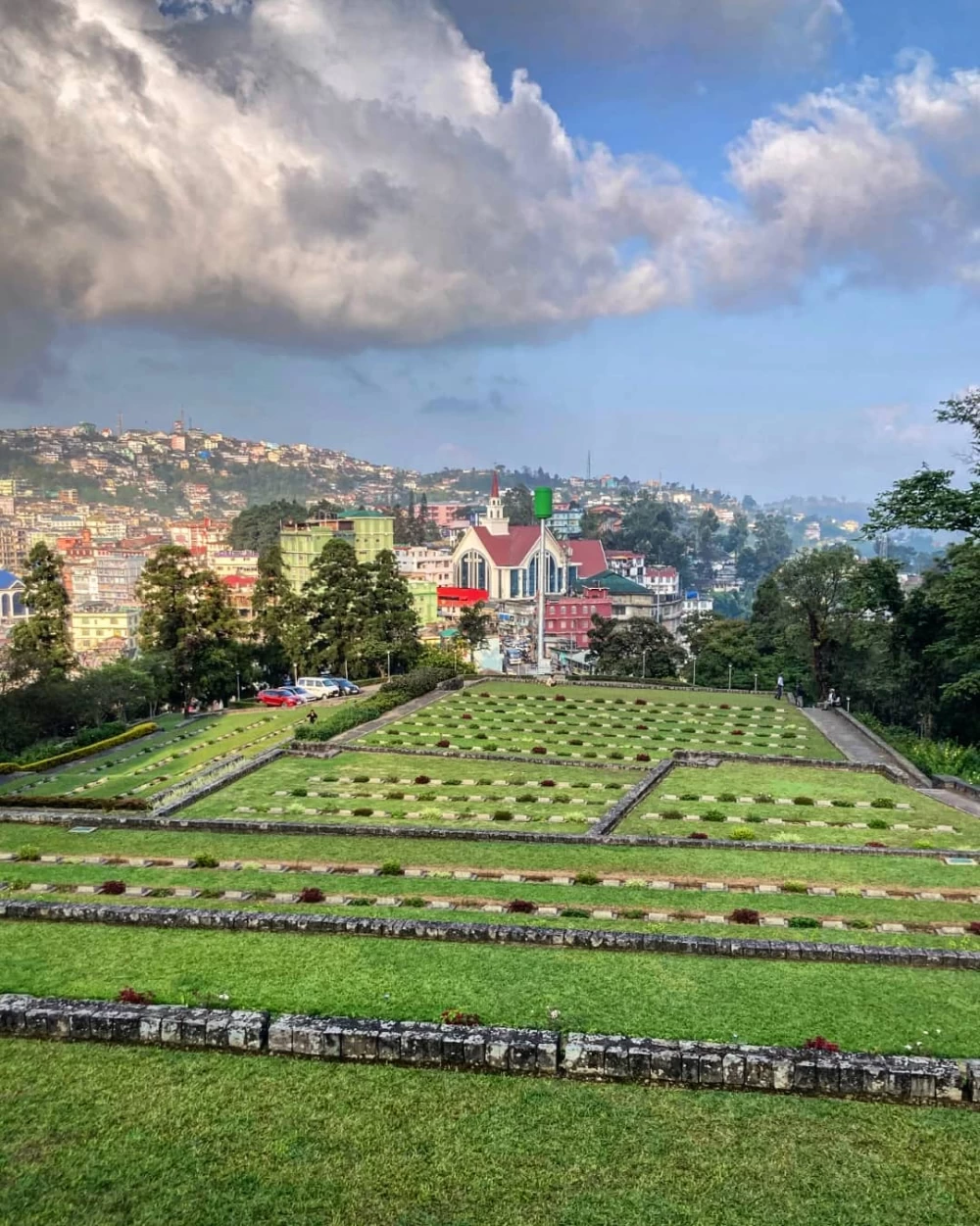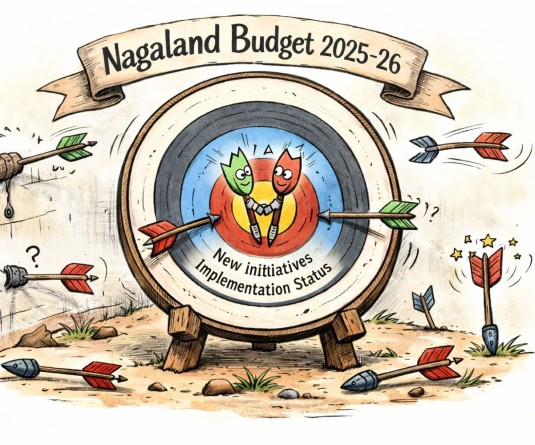Benreu village, Peren (Photo Courtesy: apen.small_villageguy@apen_tanujang/X)

Morung Express News
Dimapur | April 13
Apart from various strategies and action plan for development, the Nagaland Tourism Policy (NTP) launched in March, bets on broader appeals of tourism to attract tourists to the State.
The NTP will strive to “identify areas and investors with investment potential” and follow a destination with “centric approach to planning and development of tourism,” it stated.
To this end, the NTP outlined diverse potential areas for future tourism product development, spanning from symphony and experiential activities to culinary delights, heritage sites, and agro-tourism, as well as wildlife and eco-tourism.
However, the policy remained largely silent on the Department's strategy for mapping out the development chart.

Agro, Wildlife and Eco-tourism: As per the NTP, Nagaland has vast potential for ecotourism, It listed Khonoma, Dzüleke, Dzükou valley, Mt Saramati, Green Dikhu Project, Benreu, Sendenyu Bio-Diversity Conservation as some popular eco-tourism spot.
Agro-Tourism, a niche form of tourism things brings visitors to any agriculturally based operation or activity, can be a popular concept in Nagaland where over 70% of the population is still entirely dependent on agriculture, the NTP maintained. Apple Festival in Thanamir; Kiwi Farms in Phek; Pineapple Plantation in Medziphema etc are some of the few examples that can be promoted under this genre, it said.
“All we need is to build basic farm houses with modern amenities like showers, clean linen, European type commodes, solar lighting etc. to accommodate the prospective tourists,” it added.
Adventure/Sports and Heritage Tourism: With lofty mountain and terrain and spiralling trekking routes, the State is ideal for adventure and sport tourism such as mountaineering, trekking, zip lining, gliding, and mountain biking, cycling, rafting, angling and rock climbing, the NTP noted.
The State Policy is to develop important sites of historical importance and some of the few identified have been identified, it said. These include the War Cemetery, Kohima; Kachari Kingdom Ruins, Dimapur; Khonoma Village; historical sites at Naganimora; Chungliyimti, Molungyimsen & Impur, Kisama; Skull Stone Cist and stone monuments associated with head hunting among the Konyaks; Pot Burial sites Laruri and Mimi Village etc.
Cultural Tourism, Fairs & Festival: As per the NTP, Fairs and Festivals not only reflect the rich cultural heritage of Nagaland, but have also become the biggest attraction for tourists. The Government will endeavour to tie up with the NEZCC and the Department of Art & Culture to organise and promote these traditional festivals and take tourism to all tourist destinations, it said.
It will also be the Government policy to accord priority for the infrastructural development, improvement and marketing of such places, it added.
Music Tourism: The NTP said that music is an integral part of the life of the Nagas and the State is the first in India to introduced ‘Music as an Industry,’ while listing out creation of Music Task Force and Hornbill National Rock Contest as some of the achievement so far.
However, it was silent on the future course of action.
Experiential/Rural Tourism: Terming the “Experiential or immersion travel/experience” as a form of tourism which allows people to experience a particular place by connecting to its history, people and culture by living it, the NTP stated that development of Rural Tourism is one of the few activities which can provide such experience.
The Tourism Policy aims to implement such form of tourism through Village Tourism Development Board (VTDB), it added.
Monsoon and Culinary Tourism: As per the NTP, Nagaland looks best in monsoon when everything is “green and drenched” with nature gifted landscapes and terrains. It listed out waterfalls like Triple Fall at Seithekema and Phesama and Khonoma, Dzükou Waterfall, among others attractions.
It also noted that Culinary Tourism forms an integral part of local life and is forged by the history, culture, economy and society of a territory. Nagaland’s diverse and fascinating food offers a captivating culinary journey into the heart of the region’s rich traditions, it added.
However, detailed plans for development of both were not cited.
Wellness/Herbal and Medical Tourism: The NTP stated Nagaland has 25 hotspots regions of the world in terms of bio-diversity and possesses a vast variety of herbal and medicinal plants. This feature creates a great potential for promotion of Wellness Tourism, currently being practiced in a small scale by indigenous people in the remote regions of Nagaland, it added.
Meanwhile, it noted that the prospects of medical tourism in Nagaland are promising, as the State has been gradually “gaining recognition for its healthcare facilities and traditional wellness practices.” With a focus on holistic healing and a rich cultural heritage, Nagaland offers a unique blend of conventional and alternative healthcare options, it added.
Textile Tourism: The Nagaland Tourism Policy highlighted the state's renowned handicrafts, including textiles, woodcarving, lacquer work, and handlooms. Among these, textile tourism emerges as the most promising new product for promoting and preserving Nagaland's rich artistic heritage, it said.
The Department will strive to revive rural arts and crafts, and involved women and skilled artisans to give unique experiences to the tourist by conducting immersive themed handicraft tours to Nagaland, it added.
MICE and Golf: As per the NTP, the MICE (Meetings, Incentives, Conferences and Exhibitions) Tourism is also one of the fastest growing in the global tourism industry and its Nagaland is enormous
However, it maintained that State faces numerous challenges including critical lack of proper infrastructure, accommodations, access and connectivity and amenities.
The Department will take steps for setting up modern conventions facilities wherever possible destinations have potential, it said.
With potential for attracting both international and domestic tourists, the game of golf can be introduced to the Nagas, it stated. The foothill of Dimapur; Lowho Lake at Khezhakeno Village, Phek District and other valleys and pristine landscapes can offer scope for development of golf tourism, it added.
Linking Golf Tournaments with Hornbill Festival calendar can be a concept that can be introduced, it suggested.
Cinematic Tourism: The NPT also stated that Nagaland holds immense potential for developing film tourism due to its rich and unique cultural heritage and diverse landscapes. Accordingly, by focusing it called for film-friendly policies, infrastructure development, and strategic marketing to attract filmmakers and tourists.






